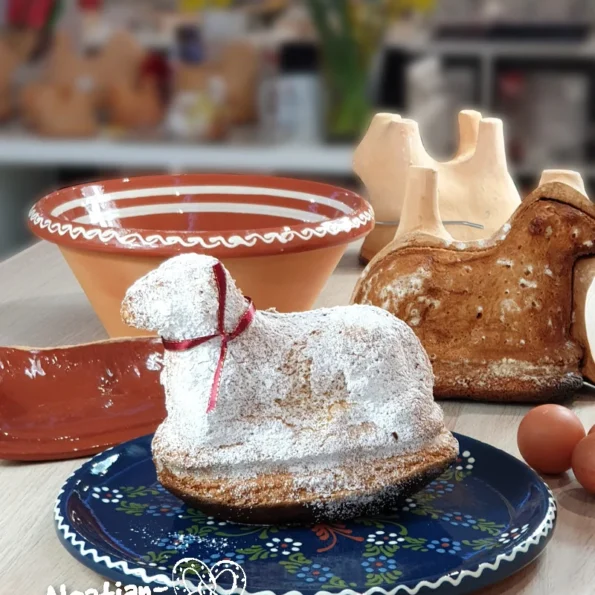Lamala / Alsatian Lamb Cake

"Lamala" is a traditional Easter dish in the Alsace region of France, and it has a special cultural and religious significance. It's also known as "Osterlammele" in Alsatian and is often made in the shape of a lamb, which symbolizes purity and sacrifice in the Christian tradition.
The dish itself is a type of sweet sponge cake, usually baked in a specific lamb-shaped mold to give it its characteristic form. The main ingredients are sugar, flour, eggs, and butter. The cake is light and airy, often dusted with powdered sugar and sometimes adorned with a ribbon before serving.
It's important to note that each family or bakery may have their own variation of the recipe, and as such, the taste and texture of the Lamala can vary. Despite these variations, the symbolism and the tradition of baking Lamala during Easter remains constant in Alsace.
The recipe for Lamala presented below has been generously shared by a passionate Alsatian, guaranteeing its authenticity and deep-rooted ties to the region's Easter traditions.
The Lamala, meaning "Paschal lamb" in Alsace, is a Genoise-type specialty (like a sponge cake) shared during Easter breakfast.
In the 16th century, the tradition wanted that one offers a Lamala to his fiancée as a symbol of love, the children also received a Lamala at the return of the mass on Easter day.
This delicacy allowed housewives and bakers to get rid of the stock of eggs accumulated throughout Lent when their consumption is excluded.
To make this recipe in the purest Alsatian tradition, you need a mold in the shape of a lamb or mutton. If you're looking to make your own traditional Lamala, you can find authentic Lamala molds for sale at https://bredele.boutique/134-moules-paques. This online boutique offers worldwide shipping, making it possible for anyone to partake in this Alsatian Easter tradition, no matter where they are located.
- 3 eggs
- 150 grams sugar
- 50 grams cornstarch
- 100 grams flour
- 1 teaspoon baking powder
- 6 tablespoons hot water
- 1 tablespoon vanilla sugar
- powdered sugar
- Prepare the lamala mold by generously buttering and flouring it. This will prevent the dough from sticking.
- Separate the egg yolks and then mix them with the sugar, vanilla sugar and water until the mixture is whitish (creamy mass).
- Add the flour mixed with the cornstarch and the baking powder while stirring. Beat the egg whites very stiff and fold into the batter.
- Pour batter into the well-buttered and floured lamb mold.
- Bake on low heat (moderate 160°C-180°C / 350°F) for 45-50 minutes.
- It’s done when the tip of a knife comes out dry. If not, bake for 5 more minutes.
- Turn out warm and take it out of the oven.
- Leave the cake cool before removing it from the mold.
- Sprinkle with powdered sugar.
The Lamala, generously sliced, is most often eaten at Easter breakfast time accompanied by hot chocolate, coffee or black tea for even more pleasure.